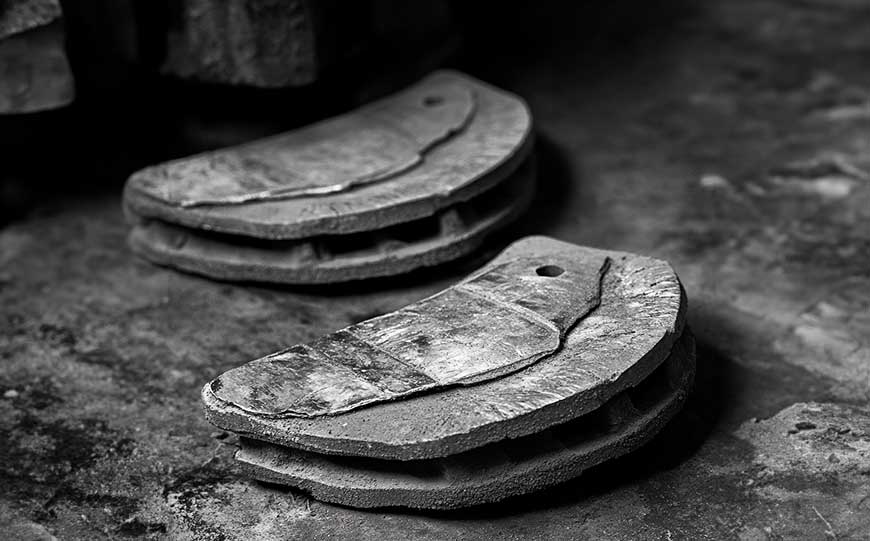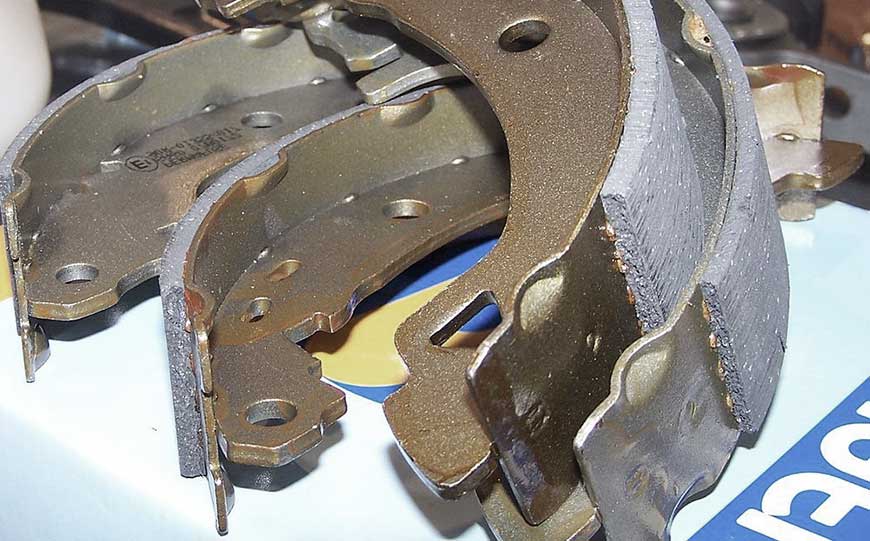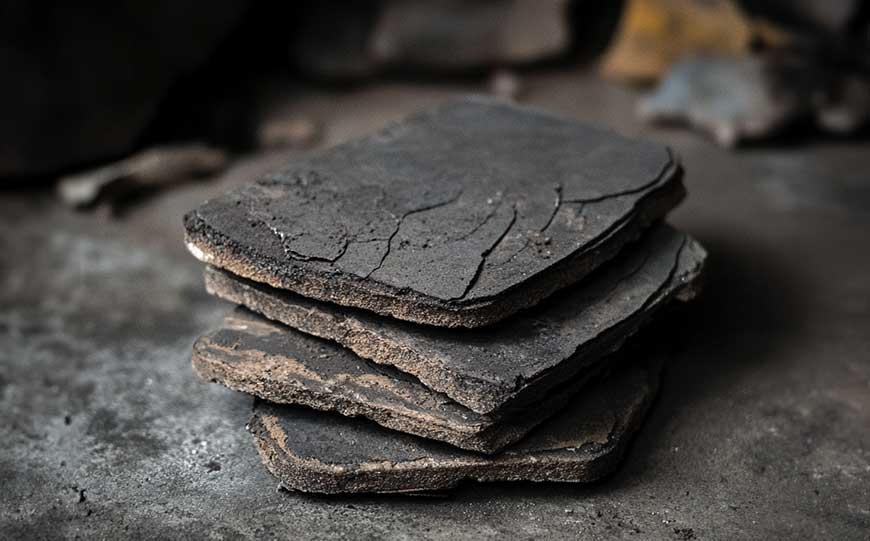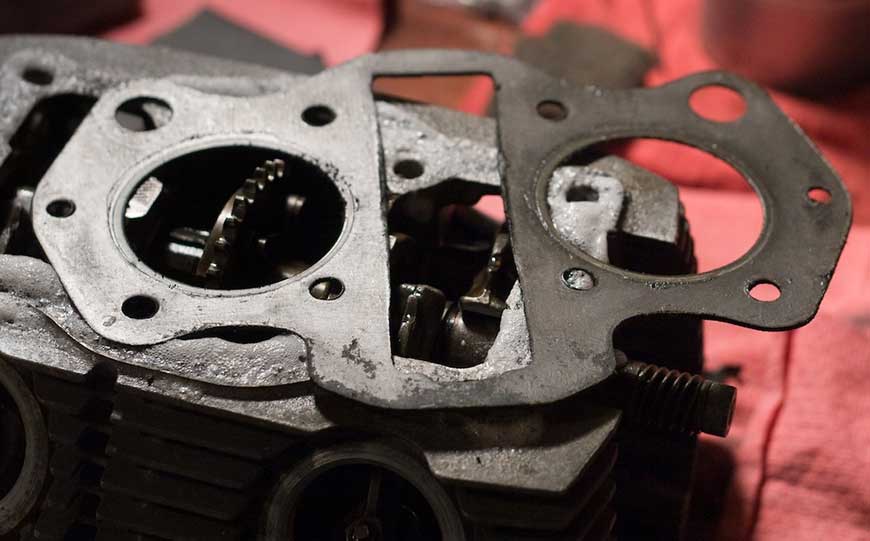
Asbestos was once considered a wonder material due to its unique properties.
It was widely used across numerous industries, including construction, manufacturing, and the automotive sector.
One of its most significant applications was in the production of brake pads, where its durability and heat resistance were invaluable.
However, while asbestos brake pads provided clear advantages, it came with hidden dangers.
Over time, the material was linked to severe health risks, prompting global concern and stricter regulations with eventual bans.
This article examines why asbestos was used in brake pads, the timeline of its usage, and the risks associated with exposure.
By understanding the history and impact of asbestos in brake pads, we can better appreciate the importance of safety regulations and awareness in protecting public health.
Table of Contents
Why Was Asbestos Used in Brake Pads?

Asbestos was widely used in brake pads because of its unique properties that made it ideal for high-performance applications.
Heat Resistance
One of the most important reasons asbestos was used in brake pads is its exceptional heat resistance.
Braking generates a significant amount of friction, which creates extreme temperatures.
Asbestos could withstand these high temperatures without breaking down or losing its effectiveness.
This made it perfect for use in brake pads, as it allowed for reliable braking performance under intense conditions.
Durability
Asbestos is a durable material, which makes it highly suitable for automotive components subject to wear and tear, like brake pads.
The fibers are tough and long-lasting, ensuring that the brake pads would not degrade quickly, even with constant use.
This durability helped extend the lifespan of brake components, making them cost-effective for both manufacturers and consumers.
Friction Stability
Another reason for asbestos’s widespread use was its ability to provide stable friction.
In brake pads, consistent friction is critical for ensuring smooth and efficient braking.
Asbestos fibers helped to maintain this stability, which resulted in smoother and more reliable braking systems.
Noise Reduction
Asbestos also helped reduce the noise produced during braking.
Its fibrous structure absorbed vibrations, which minimized squealing and other disruptive sounds when the brake pads were engaged.
When Was Asbestos Used in Brake Pads?

In the UK, asbestos brake pads were widely used from the early 20th century until the late 1980s.
Initially, it was seen as a revolutionary material due to its heat resistance, durability, and ability to enhance braking performance.
From the 1920s to the 1950s, automotive manufacturers increasingly adopted asbestos in brake components, including pads and linings, to improve reliability and longevity.
By the 1970s and 1980s, asbestos was the standard material used in many vehicles.
However, as evidence emerged linking asbestos exposure to serious health risks, its use began to decline.
In 1999, the UK government banned the use of asbestos in all products, including automotive parts.
Despite the ban, older vehicles still contain asbestos in their brake pads, posing potential risks to those handling or maintaining them.
What are the Exposure Risks of Asbestos in Brake Pads?

Exposure to asbestos in brake pads poses significant health risks, primarily when the material is disturbed and fibers are released into the air.
The dangers are particularly high for those involved in the manufacturing, maintenance, or repair of vehicles with asbestos-containing components.
Inhalation of Asbestos Fibers
When brake pads containing asbestos are worn down, cut, or ground, they can release fine asbestos fibers into the air.
These tiny fibers are easily inhaled and can become lodged in the lungs, causing severe damage over time.
Inhalation of asbestos fibers is the primary route of asbestos exposure, leading to respiratory diseases.
Health Risks
The long-term inhalation of asbestos fibers is associated with several life-threatening diseases, including:
Asbestosis
Asbestosis is a chronic lung condition that causes scarring and breathing difficulties.
Lung Cancer
Prolonged exposure increases the risk of developing lung cancer.
Mesothelioma
Mesothelioma is a rare and aggressive cancer that affects the lining of the lungs, heart, or abdomen.
Secondary Exposure
Secondary exposure can occur when asbestos fibers are brought home on clothing, skin, or tools.
Family members of workers who handle asbestos-containing brake pads may also be at risk of exposure.
Mechanics and DIY Enthusiasts
Mechanics and individuals working on older vehicles are at heightened risk of asbestos exposure.
When replacing or sanding old brake pads, proper protective equipment and safety measures are essential to reduce inhalation risks.
What Companies Used Asbestos in Their Brake Pads?

In the UK, several companies used asbestos in the production of brake pads and other automotive parts during the 20th century.
Major Brake Pad Manufacturers
Companies like Ferodo, Bendix, and Raybestos were some of the biggest names in brake pad production.
These companies supplied brake pads to car manufacturers, garages, and the aftermarket, often using asbestos in the friction material for its proven effectiveness.
Ferodo, in particular, was one of the leading suppliers of automotive parts, including asbestos-based brake pads, throughout the mid-1900s.
Smaller Producers
In addition to the large manufacturers, smaller, regional suppliers in the UK also used asbestos in their brake pads.
These companies typically aimed to offer affordable alternatives to the larger brands, often relying on asbestos to keep production costs low.
Imported Products
Asbestos-containing brake pads were not limited to UK manufacturers.
Imported car parts, especially from countries like the United States, often included asbestos in their components.
Even after the dangers of asbestos became widely known, some foreign manufacturers continued to use it in their products for years.
What Other Car Parts Used Asbestos?

Asbestos was used in various automotive components due to its heat resistance, durability, and ability to prevent wear and tear.
Beyond brake pads, many other car parts contained asbestos, especially in older vehicles.
Clutch Linings
Asbestos was commonly used in clutch linings because of its ability to withstand high temperatures and friction.
The material helped ensure smooth engagement and durability in the clutch system.
Gaskets
Gaskets, including those used in engines and exhaust systems, often contained asbestos.
Asbestos’s heat-resistant properties made it ideal for sealing parts that operated at high temperatures, ensuring that the engine components remained properly sealed.
Hood Liners and Insulation
Asbestos was used in hood liners and other insulation materials to protect vehicle interiors from engine heat.
The material provided an effective barrier, reducing the risk of heat damage to components under the hood.
Exhaust Systems
Some exhaust systems contained asbestos in their insulation and seals.
The high temperature tolerance of asbestos helped prevent overheating and maintained the system’s structural integrity over time.
Other Components
Asbestos was also used in automotive wiring insulation, brake shoes, and even some seals.
These parts were designed to endure high heat and friction, where asbestos proved valuable.
Conclusion
You should now have an understanding of asbestos brake pads.
While asbestos was used in brake pads and other automotive parts for decades, the health risks associated with asbestos exposure far outweigh its benefits.
In the UK, asbestos has been banned since 1999, but legacy issues remain.
Mechanics, vehicle restorers, and anyone handling older car components must be cautious. Use proper protective equipment and follow safety guidelines to minimize exposure risks.
Understanding the history of asbestos in brake pads helps highlight the importance of regulations and safe practices.
By learning from the past, we can ensure safer and healthier workplaces and environments moving forward.
For more information, or any advice or help on asbestos, get in contact with us here at KD Asbestos.